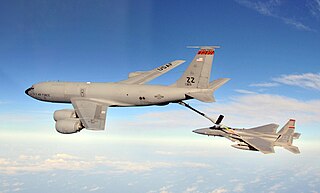
The Boeing KC-135 Stratotanker is an American military aerial refueling tanker aircraft that was developed from the Boeing 367-80 prototype, alongside the Boeing 707 airliner. It has a narrower fuselage and is shorter than the 707. Boeing gave the aircraft the internal designation of Model 717. The KC-135 was the United States Air Force's first jet-powered refueling tanker and replaced the KC-97 Stratofreighter. The KC-135 was initially tasked with refueling strategic bombers, but it was used extensively in the Vietnam War and later conflicts such as Operation Desert Storm to extend the range and endurance of US tactical fighters and bombers.

The Airbus A330 is a wide-body aircraft developed and produced by Airbus. Airbus conceived several derivatives of the A300, its first airliner from the mid-1970s. Then the company began development on the A330 twinjet in parallel with the A340 quadjet and launched both designs with their first orders in June 1987. The A330-300, the first variant, took its maiden flight in November 1992 and entered service with Air Inter in January 1994. The slightly shorter A330-200 variant followed in 1998.
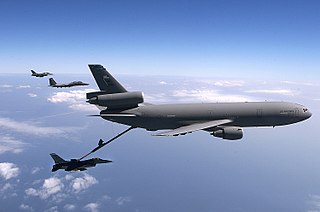
The McDonnell Douglas KC-10 Extender is an American tanker and cargo aircraft operated by the United States Air Force (USAF). A military version of the three-engine DC-10 airliner, the KC-10 was developed from the Advanced Tanker Cargo Aircraft Program. It incorporates military-specific equipment for its primary roles of aerial refueling and transport. It was developed to supplement the KC-135 Stratotanker following experiences in Southeast Asia and the Middle East. The KC-10 was the second McDonnell Douglas transport aircraft to be selected by the Air Force following the C-9. A total of 60 KC-10s were produced for the USAF. The Royal Netherlands Air Force operated two similar tankers designated KDC-10 that were converted from DC-10s.

Future Strategic Tanker Aircraft (FSTA) was a British project to procure Airbus A330 Multi Role Tanker Transport aerial refuelling (AR) and air transport (AT) aircraft for the Royal Air Force, to replace older models such as the VC10s and TriStars.

The Airbus A310 MRTT Multi-Role Tanker Transport is a military air-to-air refuelling, or in-flight refuelling tanker transport aircraft, capable of operating multi-role missions. The A310 MRTT tanker aircraft is a subsequent development from the earlier Airbus A310 MRT Multi-Role Transport, which was a military transport aircraft for passengers, cargo, and medical evacuation. The A310 MRT and A310 MRTT are both specialist military conversions of existing airframes of the civilian Airbus A310-300C wide-bodied passenger jet airliner.

The Airbus CC-150 Polaris is the designation for the civilian Airbus A310-300s which have been converted into multi-purpose, long-range jet aircraft for passenger, freight or medical transport and mid-air refueling for the Royal Canadian Air Force.

The Airbus A330 Multi Role Tanker Transport (MRTT) is a European aerial refuelling and military transport aircraft based on the civilian Airbus A330. A total of 16 countries have placed firm orders for approximately 68 aircraft, of which 51 had been delivered by 30 November 2020. A version of the A330 MRTT, the EADS/Northrop Grumman KC-45, was selected by the United States Air Force for its aerial tanker replacement programme, but the programme was cancelled.
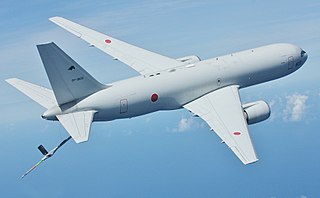
The Boeing KC-767 is a military aerial refueling tanker and transport aircraft developed from the Boeing 767-200ER. The tanker received the designation KC-767A, after being selected by the U.S. Air Force (USAF) initially to replace older KC-135Es. In December 2003, the contract was frozen and later canceled due to corruption allegations.
Qantas Defence Services is a defence service company that was formerly a wholly owned subsidiary of Qantas. In August 2013, QDS was sold to Northrop Grumman for A$80 million.
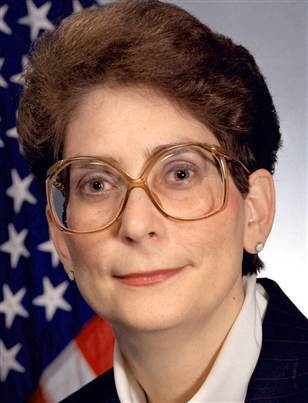
Darleen A. Druyun is a former United States Department of the Air Force civilian official, Boeing executive, and convicted felon. In 2004, Druyun pleaded guilty to a felony in relation to her role in the United States Air Force tanker contract controversy, for engaging in corruption while serving as Principal Deputy Undersecretary of the Air Force for Acquisition.

KC-X was the United States Air Force (USAF) program to procure its next-generation aerial refueling tanker aircraft to replace some of their older Boeing KC-135 Stratotankers. The contest was for a production contract for 179 new tankers with estimated value of US$35 billion. The two contenders to replace the KC-135 aircraft were Boeing and EADS, following the elimination of US Aerospace, Inc. from the bidding process.
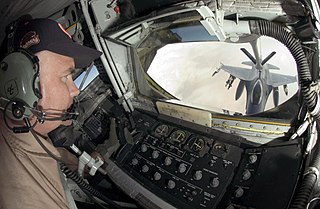
In the U.S. Air Force (USAF), a boom operator is an aircrew member aboard tanker aircraft who is responsible for safely and effectively transferring aviation fuel from one military aircraft to another during flight. The name boom operator implies that one "operates a boom", which is a long, extendable metal arm attached to the rear underside of the tanker that the boom operator connects to the fuel receptacle of a receiving aircraft. The boom operator also controls the refueling drogue, a basket attached to a flexible hose that trails the tanker, when using the probe-and-drogue system. The USAF officially designates the boom operator career field as "In-Flight Refueling" with a specialty code of 1A0X1. However, this designation is usually reserved for administrative paperwork such as enlistment contracts and performance reports, as boom operators themselves are rarely referred to as in-flight refueling specialists within the USAF. The title "Boom Operator" is most commonly used, in reference to the aircrew position they occupy on the airplane, as noted in USAF regulations and aircraft flight manuals. Fellow crew members affectionately address them as "boom" or "boomer".

Airbus SE is a European multinational aerospace corporation. The company's primary business is the design and manufacturing of commercial aircraft. The company also has separate commercial, defence and space and helicopter divisions. As of 2019, Airbus is the world's largest manufacturer of airliners as well as the leading helicopter manufacturer.
Airbus Group, Inc. represents the North American activities of European multinational aerospace company Airbus. Headquartered in Herndon, Virginia, this American arm of the company participates in U.S. Department of Defense programs, in some cases as a prime contractor. The American unit operates under a Special Security Arrangement which allows it to work independently on some of the most sensitive United States defense programs despite its foreign ownership. It employs approximately 3,200 people and had 2011 revenues of $1.3 billion.
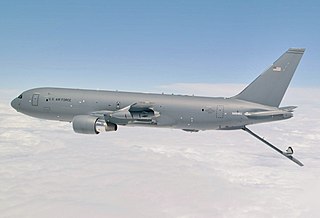
The Boeing KC-46 Pegasus is an American military aerial refueling and strategic military transport aircraft developed by Boeing from its 767 jet airliner. In February 2011, the tanker was selected by the United States Air Force (USAF) as the winner in the KC-X tanker competition to replace older Boeing KC-135 Stratotankers. The first aircraft was delivered to the Air Force in January 2019. The Air Force intends to procure 179 Pegasus aircraft by 2027.
The Mobile Aeroplex at Brookley is an industrial complex and airport in Mobile, Alabama, United States, which lies adjacent to the western shore of Mobile Bay. It is owned and operated by the Mobile Airport Authority. It was known by a variety of names until being renamed in 2010 as the Brookley Aeroplex. In the fall of 2013, the Brookley Aeroplex was rebranded as the Mobile Aeroplex at Brookley.

Omega Aerial Refueling Services is a company that provides aerial refueling services for military customers.

The Airbus U.S. Manufacturing Facility is an assembly site for Airbus's Commercial Airplanes division, located at the Mobile Aeroplex at Brookley in Mobile, Alabama, United States. The plant is a assembly and delivery site for Airbus commercial aircraft in the United States and one of the largest employment centers in the state. The site is one of four final assembly and delivery points for the Airbus A320neo family and one of two final assembly and delivery points for the Airbus A220.

The Airbus CC-330 Husky is an in-development Royal Canadian Air Force version of the Airbus A330 MRTT based on the civilian Airbus A330. Nine aircraft will replace the existing Airbus CC-150 Polaris fleet of five aircraft in the strategic transport and air refuelling roles.
















